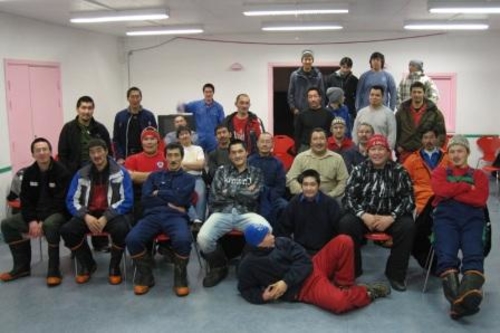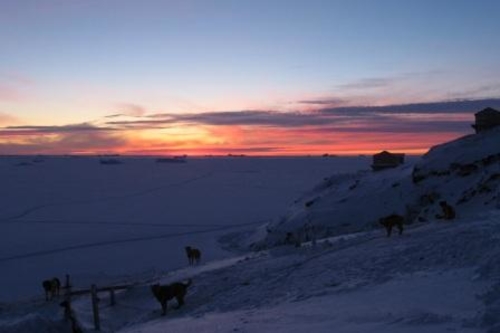Local knowledge of capelin, trout, and lumpfish recorded at Upernavik and settlements Published 26.02.2010

Scientist Josephine Nymand and biologist’s assistant Sofie Ruth Jeremiassen went to Upernavik and settlements in January 2010 to collect knowledge on where local fishermen fish for capelin, trout, and lumpfish.
It is important to gain knowledge on where fish populations and other living resources are found, and to record current human exploitation of the fish. The investigation was initiated in connection with the oil mining company Cairn’s plans to start test boring activities in the Disko West area in June 2010.
The government of Greenland will be able to use the collected data to identify areas that are highly sensitive to potential oil spills and to limit damage to the environment and fish if oil spills should occur as a result of oil boring activities. The Greenland Institute of Natural Resources and the Danish National Environmental Research Institute have previously conducted similar surveys along the west coast of Greenland concerning mapping of fish species.
‘We invited fishermen and hunters via the local KNAPK organizations as well as other users of the natural environment to public meetings in community centres, and the interest in meeting us was great. We talked mainly about where they fish for capelin, trout, and lumpfish, but also about halibut and other fish and animal species; where breeding grounds and habitats are found in shallow areas’, says scientist Josephine Nymand. ‘Between us, we managed to record and draw in their knowledge on maps, so that we now have data from Upernavik, Upernavik Kujalleq, Kangersuatsiaq, Aappilattoq, Innarsuit, Tasiusaq, and Nuussuaq. Gamekeepers from Upernavik were most helpful and sailed us to the three southernmost settlements’.
The investigation is part of the project “Environmental Oil Spill Sensitivity Atlas for the West Greenland Coastal Zone”, which is led by the Danish National Environmental Research Institute.
For further information contact Scientist Josephine Nymand, phone 361200, e-mail

After months of darkness, the sun came to Nuussuaq. Photo: Josephine Nymand.

